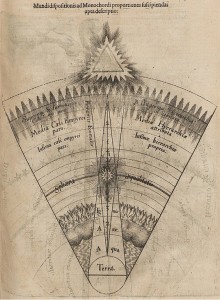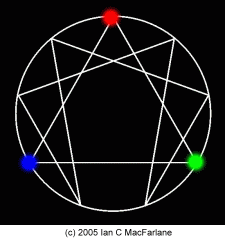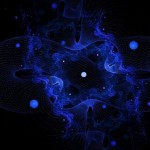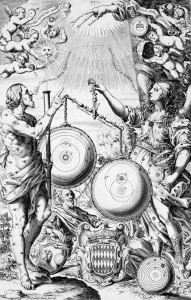Triads
The Enneagram’s ubiquity of 9 (and 3)
The Centers –
Heart: 2 + 3 + 4 = 9
Head: 5 + 6 + 7 = 18 // 1 + 8 = 9
Gut: 8 + 9 + 1 = 18 // 1 + 8 = 9
The Hornevian Groups –
Withdrawn: 4 + 5 + 9 = 18 // 1 + 8 = 9
Compliant: 1 + 2 + 6 = 9
Aggressive: 3 + 7 + 8 = 18 // 1 + 8 = 9
The Harmonic Groups –
Competency: 1 + 3 + 5 = 9
Reactive: 4 + 6 + 8 = 18 // 1 + 8 = 9
Positive Outlook: 2 + 7 + 9 = 18 // 1 + 8 = 9
The Object Relations Groups-
Attachment: 3 + 6 + 9 = 18 // 1 + 8 = 9
Rejection: 2 + 5 + 8 = 15 // 1 + 5 = 6 (multiple of 3)
Frustration: 1 + 4 + 7 = 12 // 1 + 2 = 3
Primary Types triangle: 3 + 6 + 9 = 18 // 1 + 8 = 9
Secondary Types: 4 + 1 + 7 + 5 + 8 + 2 = 27 // 2 + 7 = 9
Adding all of the numbers (1,2,3,4,5,6,7,8,9) equals 45 // 4 + 5 = 9
Looking at the types horizontally, across the e-symbol from each other:
8 + 1
7 + 2
6 + 3
5 + 4
3-6-9
Using the metaphor of sound vibration, discerning qualities of continuity- and discontinuity-of-vibration works well when contrasting the Secondary types (1, 2, 4, 5, 7, 8) with the feedback loop of 3-6-9:
The equilateralism of the equilateral triangle alludes to egalitarianism/sameness/overlap as a theme with the Attachment/Primary types – they’re repetitions of 3. This loop is the reason for some of the confusion that arises around people of these types. At a certain level, as iterations of 3, they stack on top of one another rather seamlessly, reinforcing and echoing the vibration of 3 — in some sense, difficult to distinguish in the soup of the loop.
Whereas the Secondary types are the more articulated individualized ego styles; these egos are less permeable, less susceptible, structurally, to giving and receiving the equal lateral. Their solidity slows the collectivist (369) vibration as it passes through them, rather than augmenting it.
E3 is emulation/modeling – the first iteration of ‘3’ – which starts the trend for the triad, and since E3 isn’t yet overlapped (or added to) by another 3, this is the more separate ego of the group…though, still being the seed-style (‘model’) for what’s to follow.
E6 straddles two opposite 3s. Good/bad, right-wrong, black/white: these wide bifurcations are organically attracted to the functional dynamics of Superego; they’re formed from the same mold as Superego, hence 6’s place in the superego-compliant group (1, 2, 6). E6 recalls the Scales of Justice, i.e.- fairness/egalitarianism is a major piece in this iteration.
E9 adds a neutral 3 to the two opposing 3s…bringing a potential integrative function…or a dispersive haze: bifurcation becomes tri-furcation…i.e.- self-dispersion/distribution into the many. The ego is more porous and has softened here. Emulation/modeling becomes merging and harmonization, tuning the self musically to outside forces. There’s an identification with the zero point of the Neutral; the self disappears and makes way for others — to be absorbed in various ways/forms. Add the number 9 to any other number, and the 9 disappears, while the other number gets a second iteration…e.g.: 9 + 5 = 14, add the 1 and 4…the 5 gets reconstituted…the 9 is gone…
3/6/9 is where the Everyman theme/archetype stems from, often finding its embodiment in E9, the culmination of the trip through Heart, Head and Gut…the swirling loop, the accumulation of everything.
New Harmonic Groups
Starting from Riso/Hudson’s Harmonic Groups, following the idea through, with the hunch that all multiples of 3 and 9 will bear fruit, if we turn the dial and lock in on a new set of ‘chords’, there seems to be a logic to these groupings, and some ring of truth.
9/2/4: idealizers/romanticizers – lush, sensual, soft-membraned, empathic susceptibility to people
3/5/7: objectifiers/exteriorizers – mid-hard, flexible but firm, ‘muscular’ on some mental level, object-orientation
6/8/1: authoritarians/controllers – rigid, brittle, seizing, clenching, justice-orientation
Δ Δ Δ
The third set of Harmonics:
2/4/6: feeling-based judgments, sentimental rescuers/rescuees, heart-expressions, obligation around Feeling
5/7/9: non-judging perceivers/observers, conceptualists/synthesists, emotional detachment via abstraction
8/1/3: tangible doers, assertive movers, immediacy of action, self-controllers
Δ Δ Δ
Note that the R&H Harmonic Groups (triads) add up to 9, and the second set (in blue) adds up to 6; the latter adds up to 3.
These sums could be framed as:
¤ the ‘9’ triads represent global yet more purely unconscious characteristics of the given groups.
¤ the ‘6’ triads represent inter-relational/one-to-one issues for these groupings, as alluded to by the symbol of two interfacing units of 3 (3+3=6). This group represents what could be called semi-conscious processes.
¤ the ‘3’ triads represent qualities of ‘unilateral’ thrusts emanating from these groupings. These are the more conscious mental processes.
Δ Δ Δ
© 2013 David Gray




